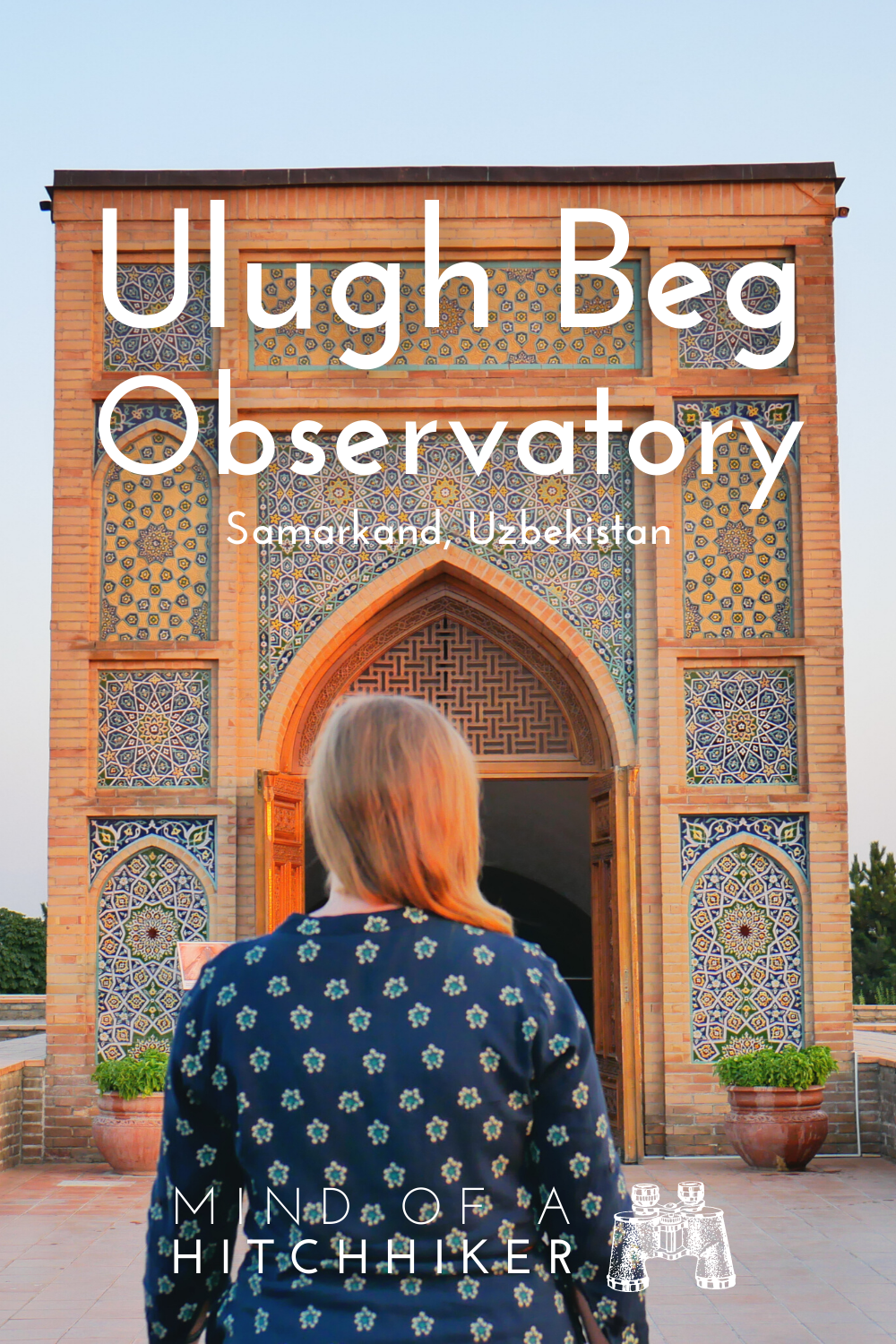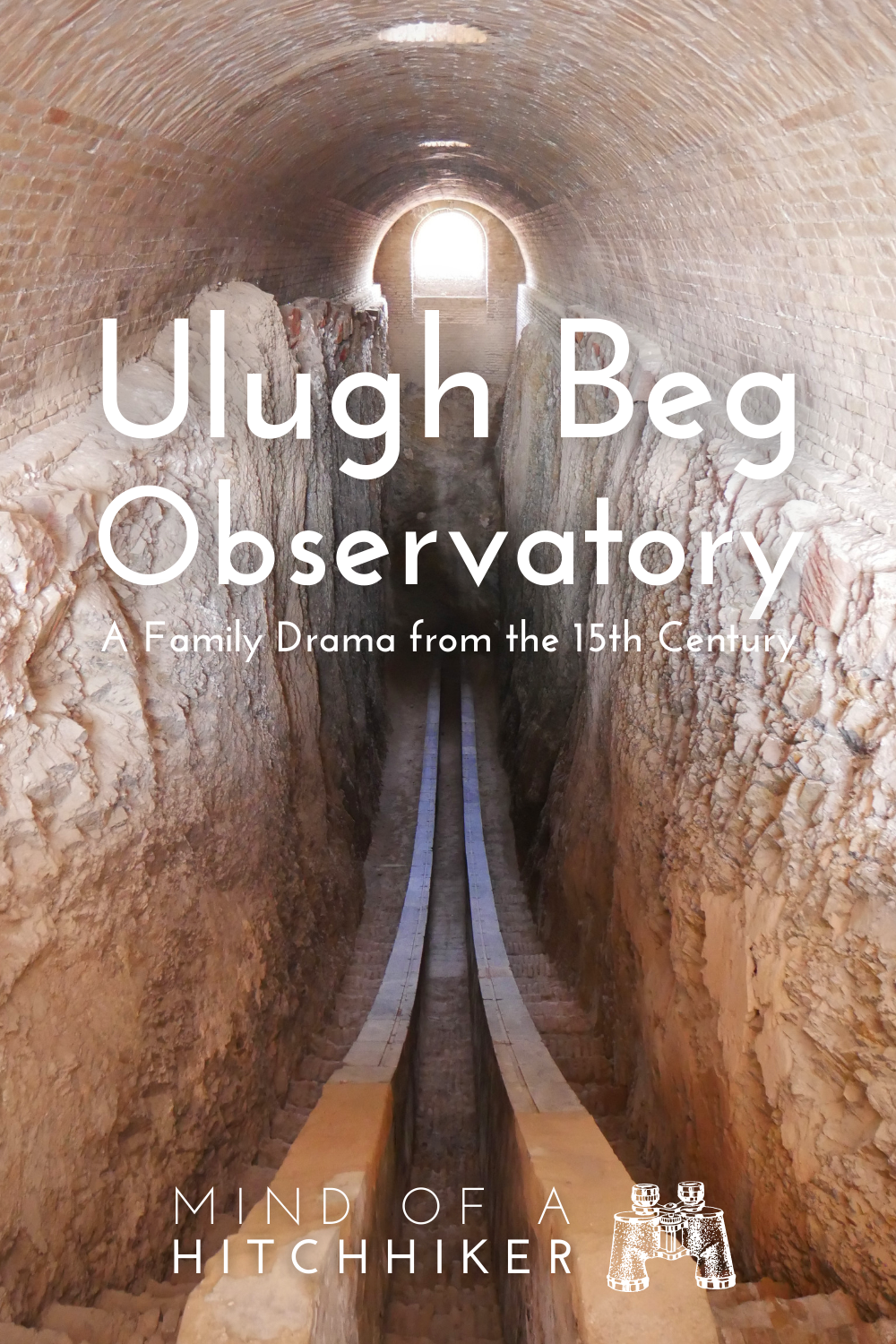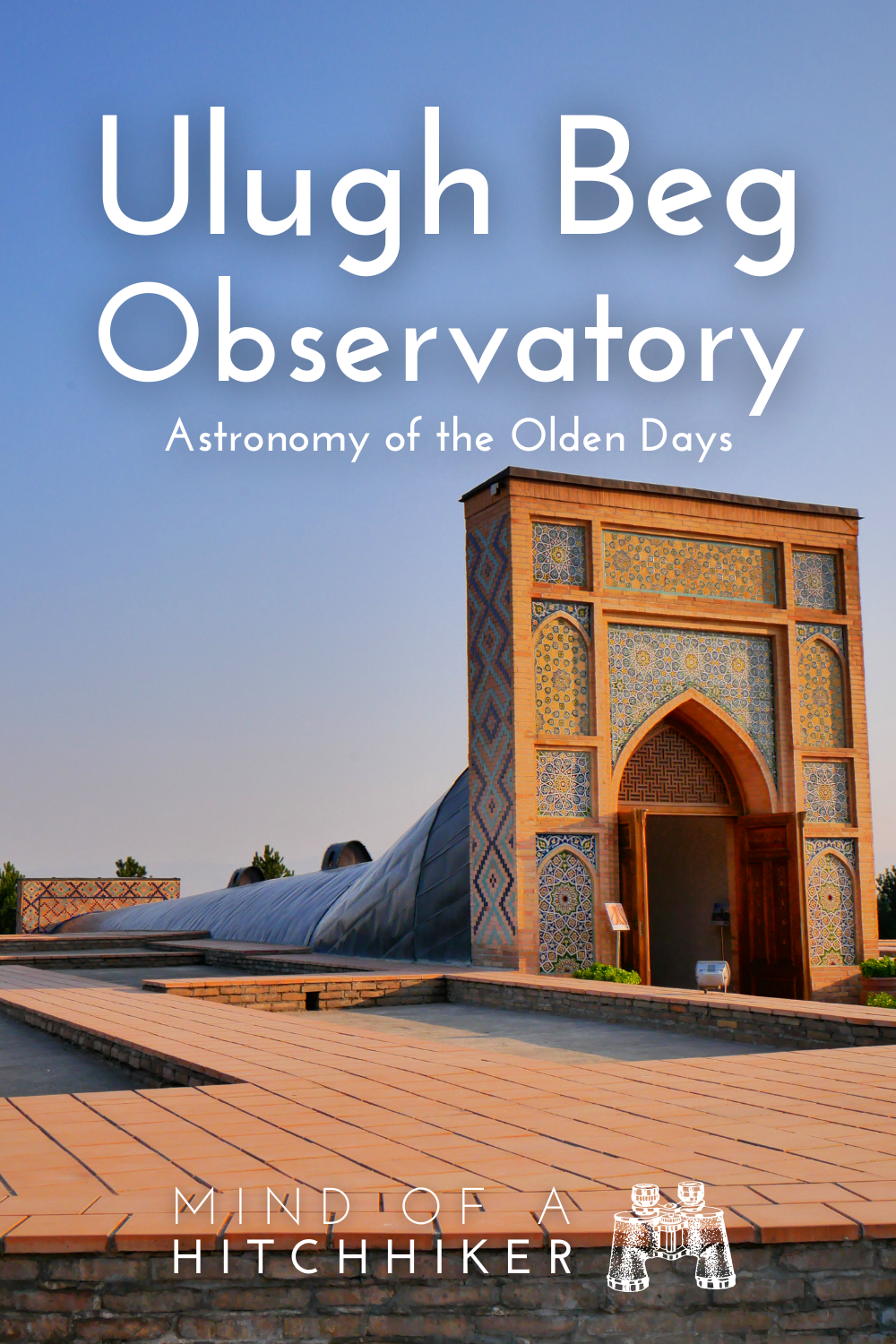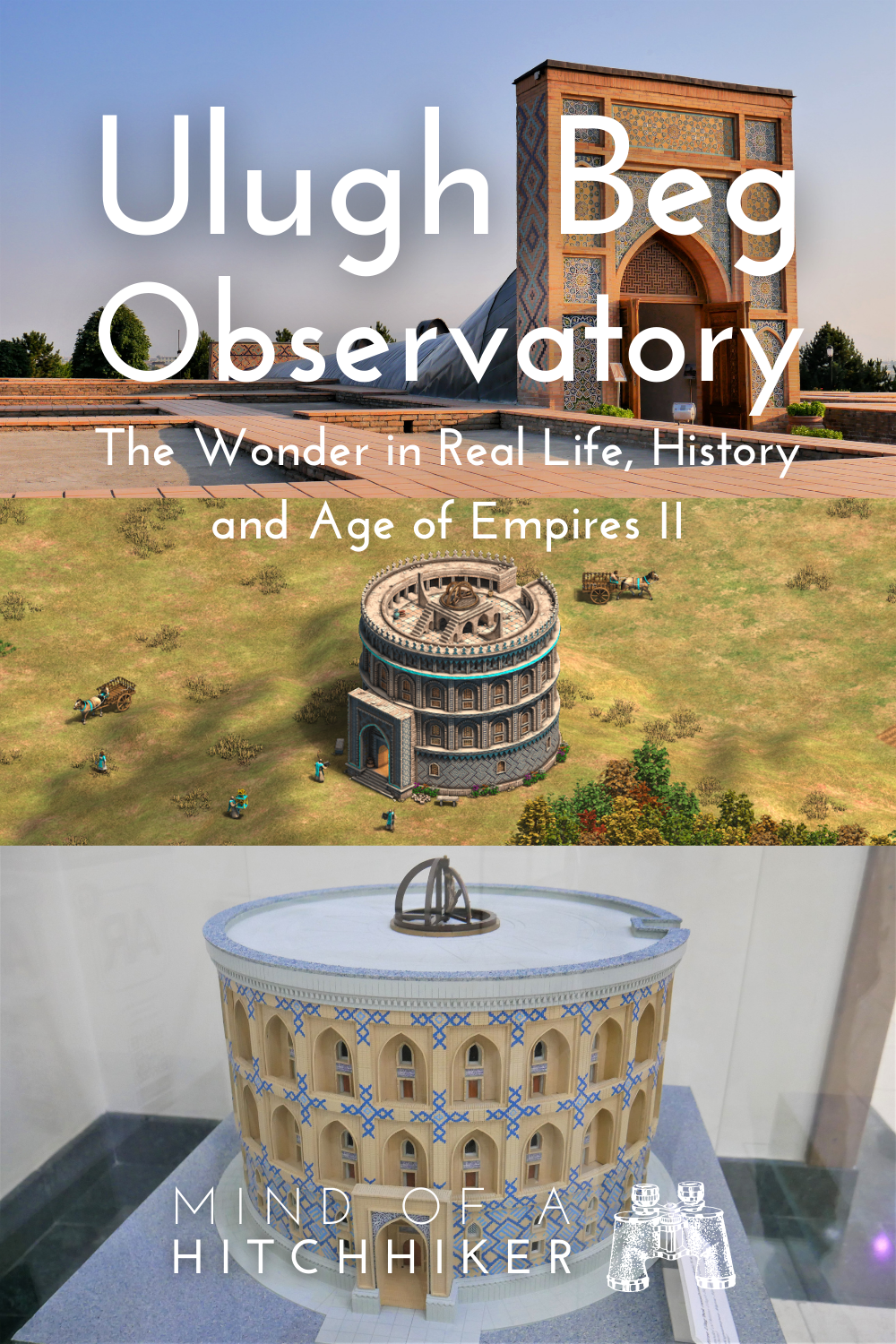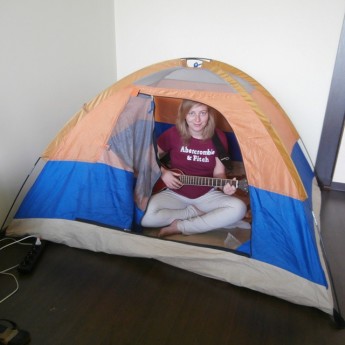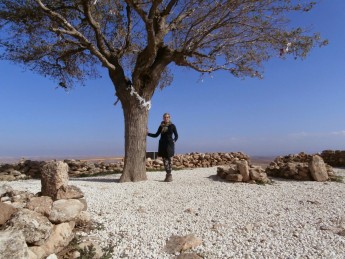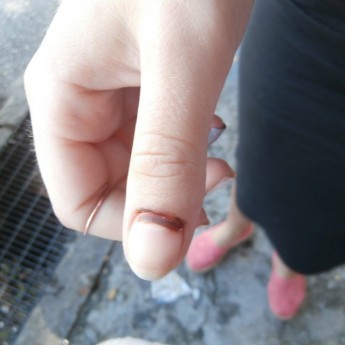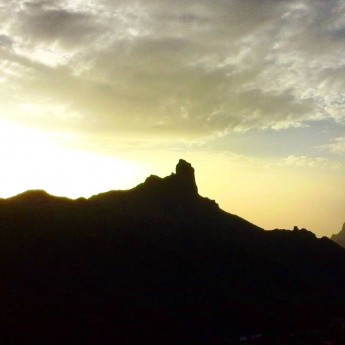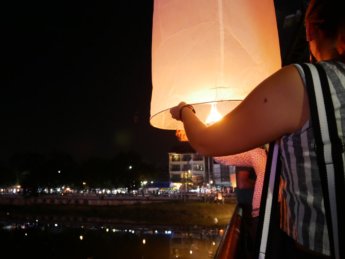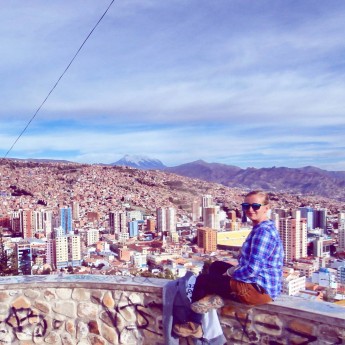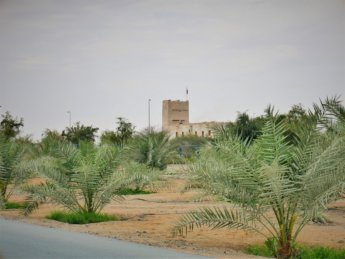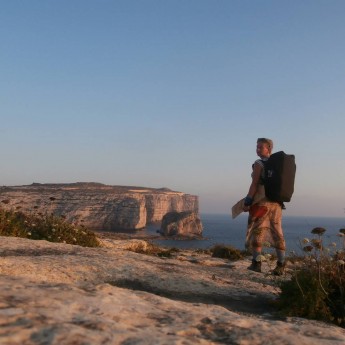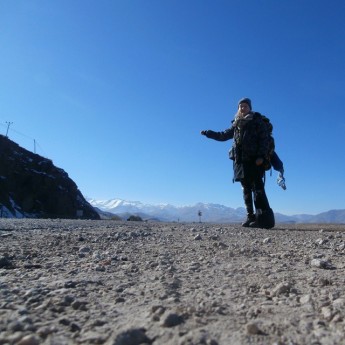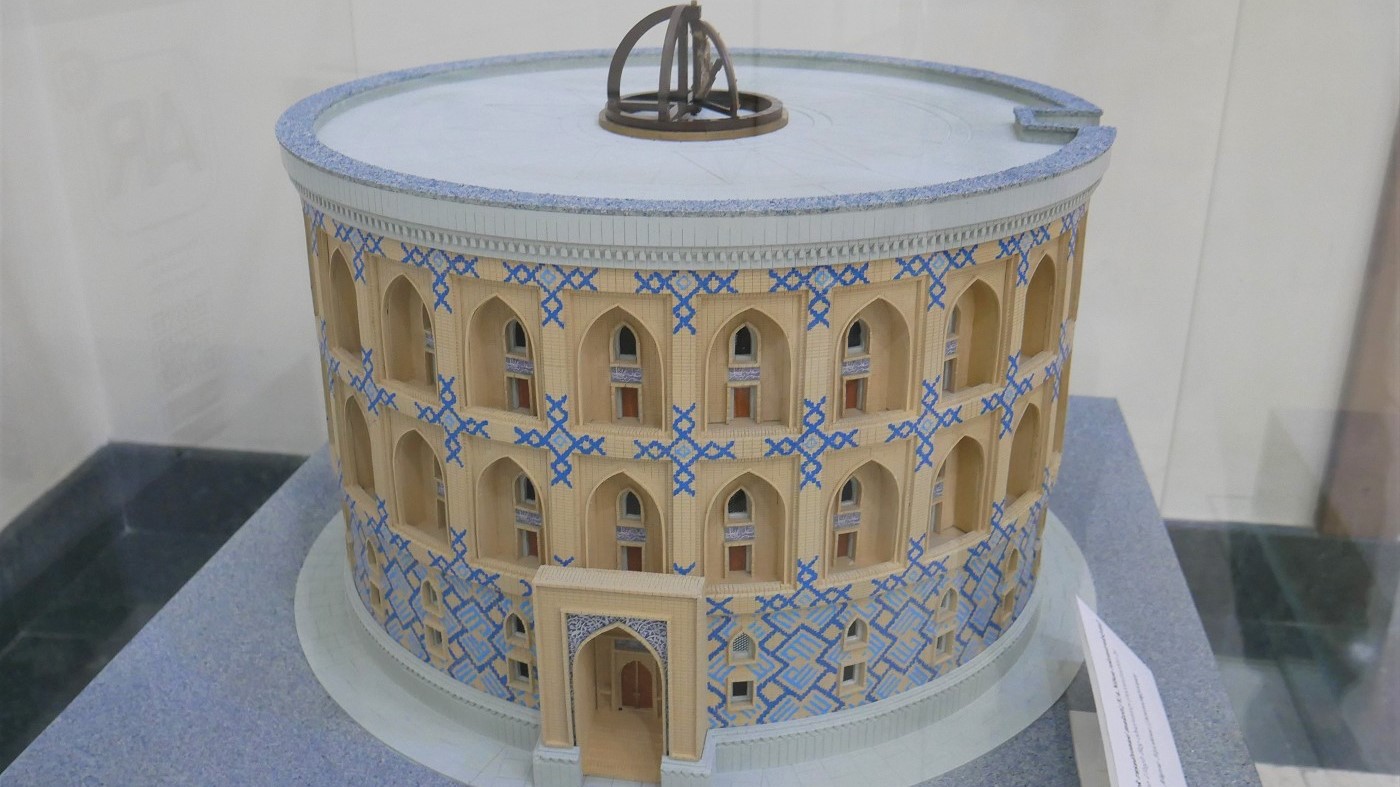
There are two reasons why the number one sight for me personally in Samarkand was visiting the Ulugh Beg observatory. The first is that I like visiting observatories and planetaria and other space shit. The second reason is that I love visiting the real-life versions of the wonders of Age of Empires II (AoE2).
Brief History of Ulugh Beg

Astronomy geek
Mirza Muhammad Tāraghay (aka Mirzo Ulugh Beg, 1394–1449) was the grandson of Amir Temur (aka Tamerlane, aka Timur, 1336–1405), a conqueror and the founder of the Timurid Empire, dynasty, renaissance, etcetera. Ulugh Beg’s daddy moved the capital from Samarkand to Herat and the 16-year-old became governor of Samarkand in 1409. Two years later, he received a larger portion (Transoxiana/Mavarannahr) of the empire to rule.
But as a third-gen kid, he was more interested in astronomy and mathematics and not ruling. He turned Samarkand into a true university town by building madrasas (including the left one at the Registan from 1417–1420). He invited loads of other smart Muslim mathematicians and astronomers to come to Samarkand to collab. Being a rich kid with a passion, he built his observatory on previously existing foundations supposedly from 1422–1428 and adapted the design of the Maragheh Observatory. Inside of it, he built the largest quadrant that ever existed.
In his personal life, he went through 13 marriages. One of these marriages resulted in his third son, Abdal-Latif Mirza. From what happened later, we can only assume that daddy concerned himself more with making huge and impactful scientific discoveries and not changing nappies and other debasing nonsense. Because children are gross and they break shit. Shit like delicate scientific instruments.
Ulugh Beg’s rule
When Ulugh Beg’s father died in 1447, it was time for him to rule because a) he was the eldest son and b) he was the only one left out of five (oops). But there were so many offsprings of Amir Temur that, predictably so, a war of succession broke out in the face of Ulugh Beg not having the mind of a statesman. Ulugh Beg went away from his precious Samarkand and observatory and traveled to Balkh and Herat to put a nephew or two into their places. When he returned to Balkh, his own son had betrayed him.
Ulugh Beg was about to meet his son in battle on the banks of the Amu Darya river when he received news of fuckery happening in Samarkand. He returned to Samarkand and later surrendered to his son under protest. His son Abdal-Latif allowed his daddy to make a quiet exit by leaving Samarkand to make Umrah to Mecca in 1449. But his son who hadn’t been loved enough by his father decided to do him dirty; he sent an assassin to murder his father not long after he left. He was 55 years old.
But Abdal-Latif’s petty bullshit didn’t end there. He destroyed perhaps the world’s greatest observatory out of spite, though he left Ulugh Beg’s madrasa at the Registan intact. However, not destroying an educational and religious building didn’t prevent Abdal-Latif from ending up on the shit list. A bunch of people conspired against him and murdered him a mere six months after he killed his father. The drama!
In 1908, the area of Samarkand had been colonized by the Russian Empire and renamed Russian Turkestan. A guy named Vasiliy Vyatkin rediscovered the legendary Ulugh Beg observatory after studying 17th-century documents that hinted at its location.
Visiting the Ulugh Beg Observatory in 2021

On our first full day in Samarkand, I already wanted to go to the Ulugh Beg observatory. The public holiday of Eid al Adha (19–20 July) is coming up. This means loads of people (Uzbekistanis and foreigners) will travel and businesses will close. Visiting before the holiday isn’t a guarantee it will be calm and quiet, but it’s our best bet.
The Ulugh Beg observatory is the site in Samarkand I was most interested in. Not the iconic madrasas at the Registan square, not the Bibi-Khanym mosque. No, what tickled my fancy was this destroyed building that has seen many renovations of mild success over the years.
Though the heat in Samarkand this July wasn’t as bad as what we’ve experienced in Tashkent, I still found it a good idea to go close to the evening both for heat and photography reasons. Sunset is around 20:00, so at 17:45 we headed out of our Airbnb to catch a taxi out to the observatory. I quickly looked up on Wikipedia the name for the observatory in Russian, which is Обсерватория Улугбека.
From the nearby Registan, we stopped a yellow cab and asked him how much it is to the Observatoriya Ulugbyeka. UZS 20.000 in total. We hopped in. At first, we weren’t sure if he had understood me since I had my mask on and didn’t speak that loudly. We were taking a route that felt like the wrong direction. But we eventually course-corrected towards the observatory.
Bring a face mask to the Ulugh Beg observatory (not what you think)
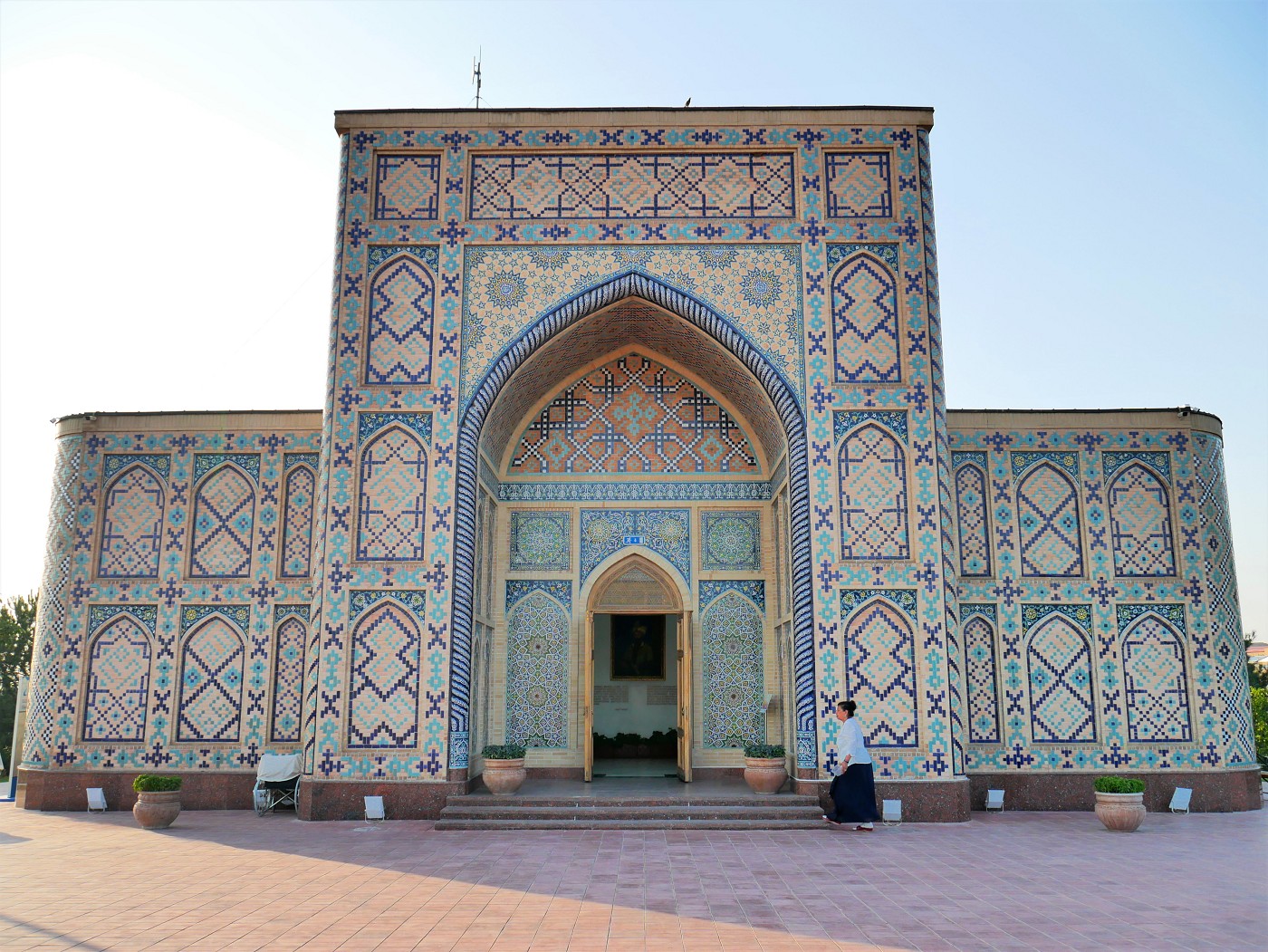
Once we arrived, we walked past the Ulugh Beg statue where I took some photos. Jonas was immediately harassed by a million tiny flies. I wanted to say something, but I inhaled something and it broke my voice. I probably swallowed a fucking fly. Jonas considered turning around and getting a taxi out of here, but I gave him my sunglasses to protect his eyes and told him we have a great tool to keep flies out of our mouths and noses: the face mask. He put them on and we didn’t stand still for too long so they couldn’t linger around us. I do not know if this is a summer-only problem but prepare for it in any case.
When buying tickets, I wanted to gather some info for this post. It has been a persistent problem in Uzbekistan that one can’t ask for information that isn’t relevant right now. In a liquor store, I asked if there’s a zhivoye piva place in Samarkand. They said yes there is, but it’s closed. When I asked where it is so I can go there tomorrow, they simply repeated that it’s closed and didn’t want to answer me, no matter how often I said “Это для завтра, не сейчас.”
In a similar fashion, I asked the lady in the ticket booth when the site closes. At 20:00 was the answer. Then I asked when it opens in the morning, which was met with “It’s open” plus a smile. So I repeated the question with “tomorrow” added and received the same answer. Even another guy got involved with my question to tell me that it closes at 20:00 this evening but to also not answer my additional question. Smiles had gone. So I took some photos of an A4 with loads of information in a very small font size to consult in peace at home. When I say that the Ulugh Beg observatory opens at 8:00, I’m relying on the internet and not this sheet because it only had prices.
Remains and reconstruction of the Ulugh Beg observatory
So Ulugh Beg’s son destroyed the Ulugh Beg observatory in 1449. But the shitbird couldn’t do anything right, so he destroyed only the parts above the ground. Because of the enormous scale of the quadrant, the materials they could use to build it, and the ground stability, Ulugh Beg decided to build about one-quarter of his observatory underground. Smart move, because the underground bits of his life’s work survived.
At the site, you can see the gigantic circular foundation with a gate on the northern end and one on the southern. These gates are partially reconstructed, especially the one that you can walk to see the underground quadrant; it’s close to the middle of the circular foundation. If you look down on what looks like an ancient roller coaster, the curve is not that steep. There are even steps that look a little unergonomic, but hey it’s a 15th-century building. Now imagine that this curve continues above your head to form a gigantic quarter pizza slice and it’s just… wow. Its proportions were… astronomical.
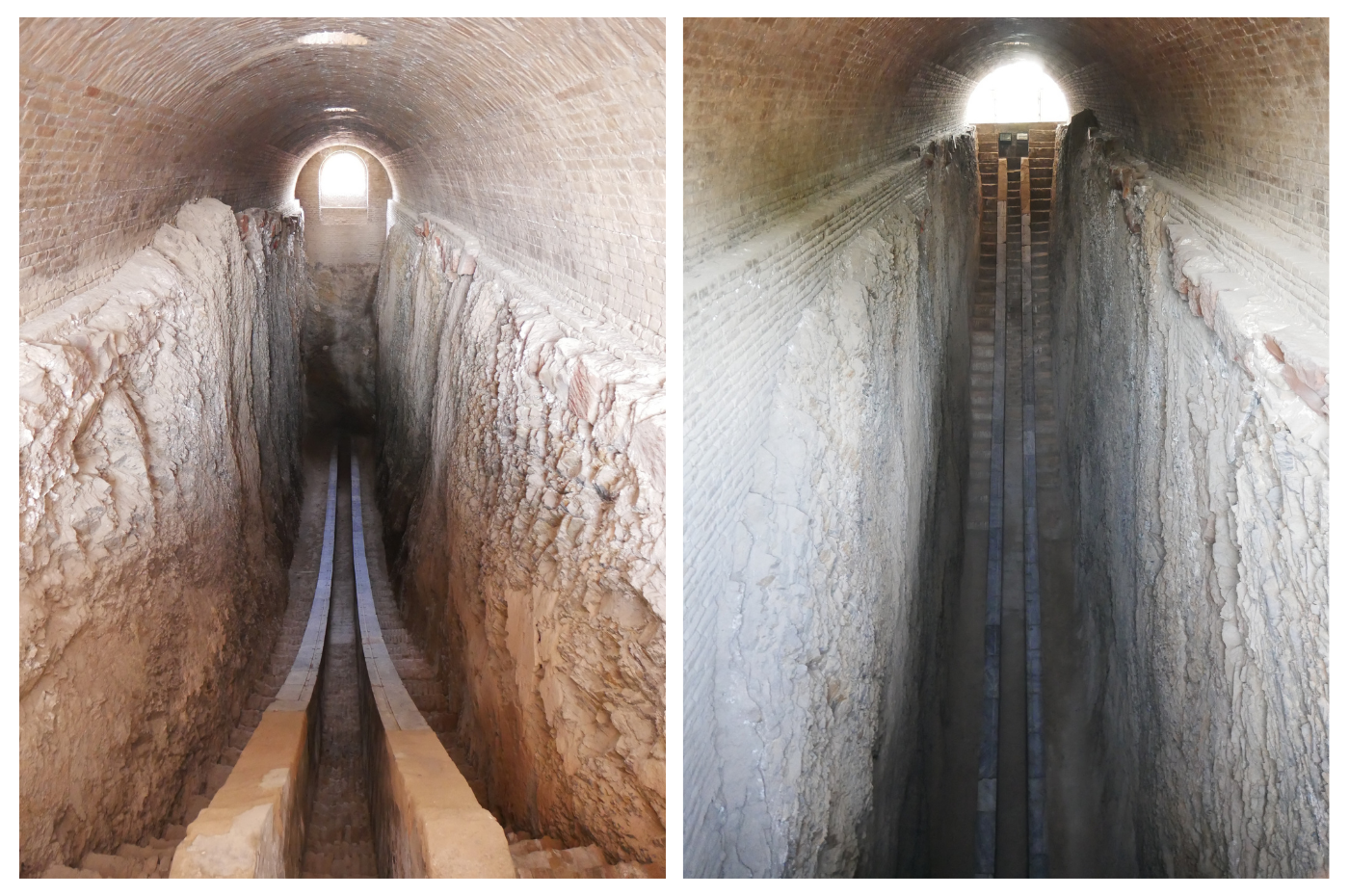
Left: view of quadrant from the front (smooth steppies down). Right: view of quadrant from the back (steep drop down, they put a fence here so children stop throwing themselves down as they do)
In the modern-day remnants, you can see light pouring through a gate on the other end and two holes in the ceiling. This is part of the renovation to protect the ancient quadrant inside and not part of the science. The real building would have been like a gigantic cylindrical cake with three floors above the soil, split in two by the narrow pathway of light for the quadrant—effectively separating the offices and other rooms in one side from the other as to not disturb the path of light. The corner of this quadrant had a little window to let the light in. The rooftop was used to place other instruments for nighttime stargazing activities and presumably some rad parties.
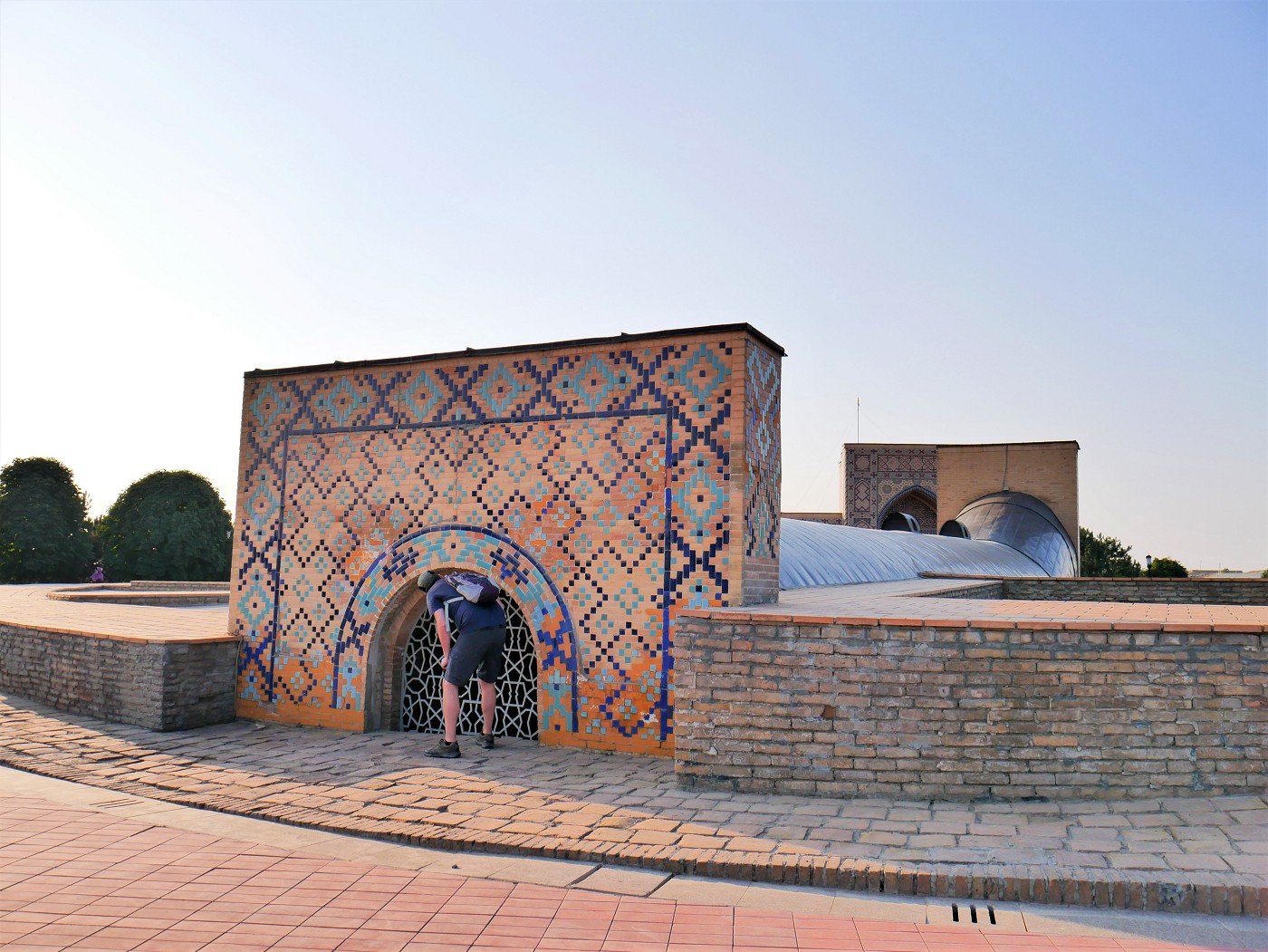
So what you can see today is really the grotty vestige of a brilliant past; the marble is gone and the renovations over decades have been of mixed success. They don’t build observatories like this anymore. Calling it a ‘wonder’ of its time is really not a stretch.
The museum next to the site

After circumambulating the Ulugh Beg observatory and spotting the grave of Vasily Vyatkin, we headed into the museum. This building is completely new. There are some nice murals with Ulugh Beg and his science brothers and lots of buzz about the augmented reality app NazzAR (Google Play + App Store). We didn’t download it over mobile data so we didn’t use this extra info. A guy walked up to us if we wanted a tour, which we declined because I’m slow as fuck in museums when it comes to physics.
Inside the museum, we took a left, which isn’t where you should start. At the left, it begins with the current state of astronomy in Uzbekistan; mainly the Maydanak Observatory (location + website + Russian wiki) to the south of Samarkand. Uzbekistan looks like a good country for an observatory because it’s quite dry here.
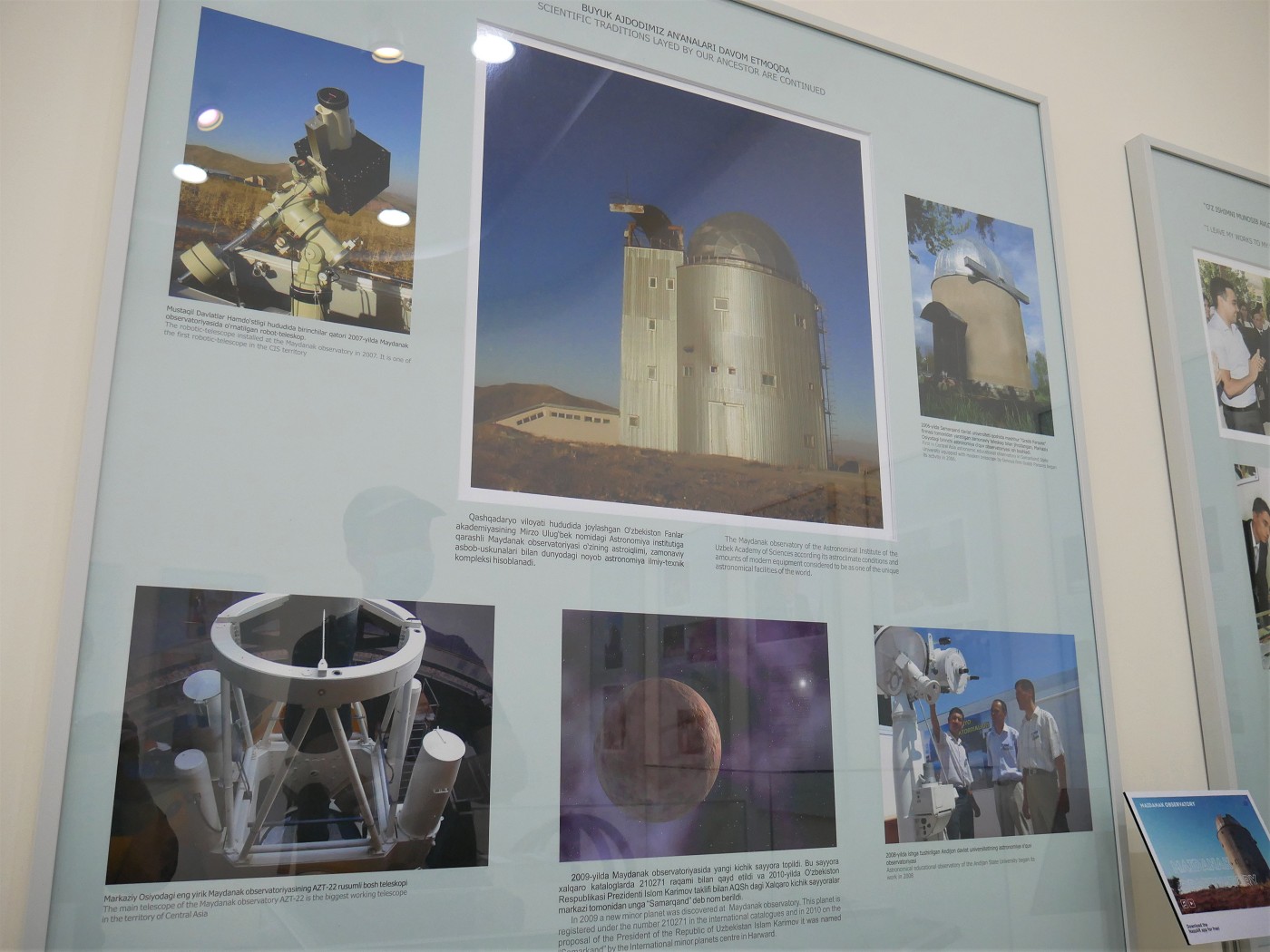
Astronomy of the olden days
Next, there are models of various instruments from the time of Ulugh Beg. Think astrolabes, armillary spheres, double-arc quadrants (the instrument they probably placed on the rooftop), and so on. There are some remnants of stone instruments they found at the time of excavation. It also details how precise the quadrant was and how they calculated the length of the year and the Earth’s axial tilt within acceptable modern-day margins of error. It also tells of Ulugh Beg’s best surviving life’s work: his star catalog of 1018 stars called Zij-i Sultan.
The museum has a great variety of small photos of similar instruments around the world. There are also artist’s renderings of how Ulugh Beg and his gang were sciencing it up inside their absolute unit of a quadrant. And did you know that during the eight years a student would learn in a madrasa, they’d receive a salary? As it should be.
Then the highlight for me was to see the models of what the Ulugh Beg observatory might have looked like in the olden days.
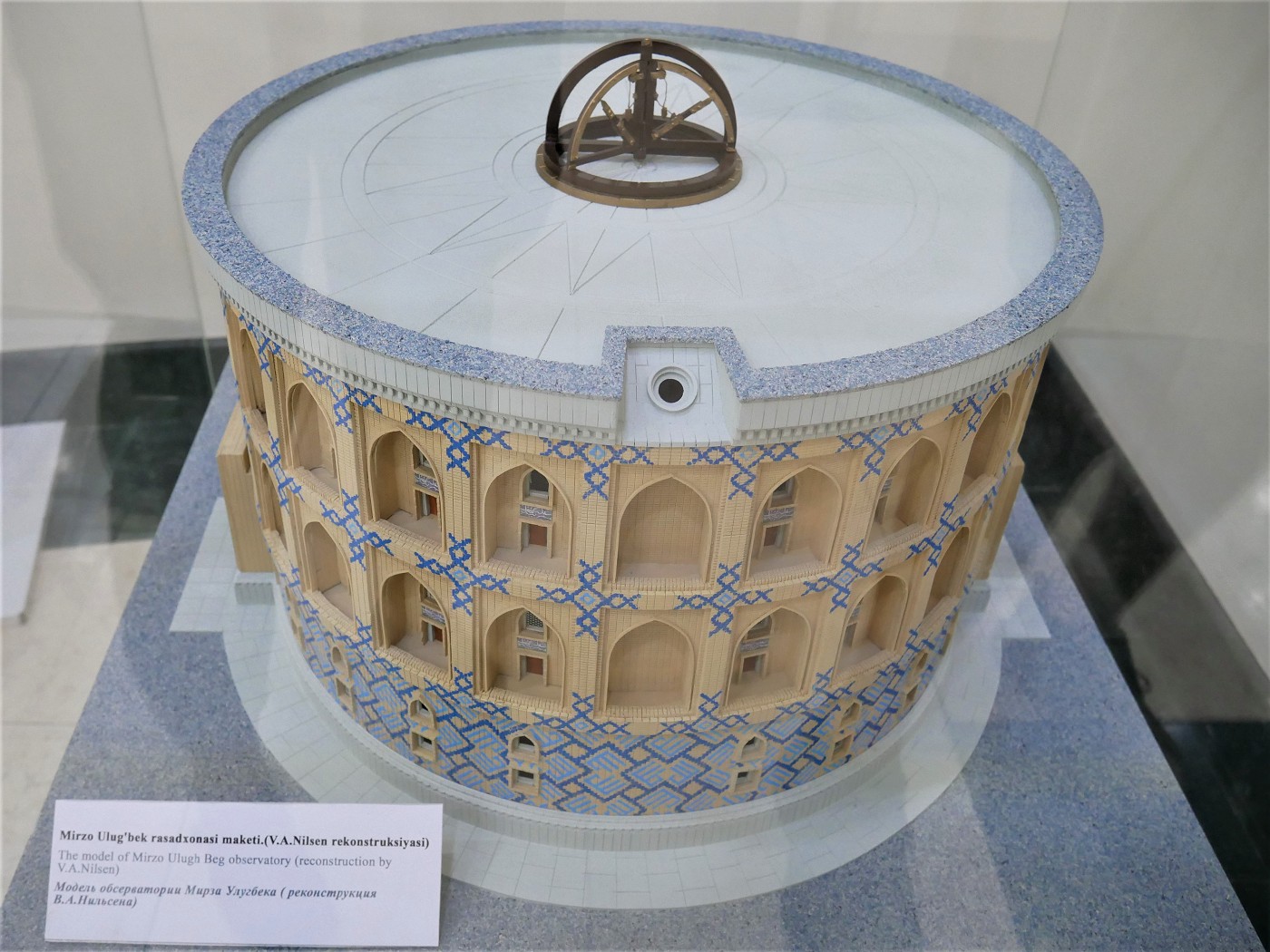
There’s one model that’s sliced in half to reveal where exactly the light poured in and how the astronomers had access to the steep parts of the arc to observe the degree of light fall, which were represented with Arabic letters

Lastly, for us, we ended up in the section that’s generally about the Timurid Empire. After the Islamic Golden Age, the Timurid Empire took over the baton of great scientific and cultural achievements. There’s a family tree starting with Amir Temur showing all the relevant players in how this observatory was created and destroyed.
After that, we took some more photos and then a taxi back home, satisfied with our trip.
Know Before You Go
Ulugh Beg observatory opening times and ticket prices in 2021
Opening times: every day from 8:00 until 20:00. I am not aware of different opening times in the winter months.
Ticket price: UZS 25.000 per foreign adult. Though inflation is a topic in Uzbekistan, that was €1.99 or US$2.35 at the time of making this trip.
As mentioned before, bring a facemask. Not only because anyone might ask you to abide by the COVID-19 rules at any given moment, but because I can only think of one person who enjoys inhaling tiny flies.
Is the Ulugh Beg Observatory Worth Visiting?
If you have the hots for stars and perhaps identify as a sapiosexual: yes, the Ulugh Beg observatory will titillate your senses. If you’re hoping to be visually stimulated by flashy things, then stick to Registan Square.
And now, the section you call came for:
Representation of the Ulugh Beg Observatory in Age of Empires II
In Age of Empires II, the Ulugh Beg observatory is the wonder of the Tatar civilization. In the gameplay, to build a wonder is to show the superiority of your civilization and is one way to win the game. I do not know how the game makers choose which real-world building represents which civilization, but it doesn’t always make perfect sense and some things are anachronistic.
The Tatars represent a Central Asian civilization skilled in horsemanship. The Tatars in the game are based on the very broad ethnic group called Tatars. The people first spoke Mongolic languages and later adopted Turkic languages, hence many sources referring to Tatars as Turco-Mongolic. It’s mostly historic European sources lazily calling everyone from Central Asia Tatars.
Since this civilization’s main campaign focuses on Tamerlane (Amir Temur), it’s the Timurid Empire that mostly forms the basis. I don’t believe that Amir Temur identified himself as a Tatar; he tried hard to legitimize his reign by claiming descent from Genghis Khan, who was a Mongol (and can be played in a different campaign). Amir Temur himself also spoke several languages, such as the extinct Turkic language Chagatai, Persian, and Mongolian. However, even if he didn’t identify as Tatar, Amir Temur’s eclectic army often consisted of people who might have referred to themselves as Tatars.
Considering Amir Temur’s conquering spree made way for the Timurid Empire and its associated renaissance, picking his grandson’s observatory as a wonder completely fits the story. And what a wonder the Ulugh Beg observatory is.
This is what the Ulugh Beg observatory looks like in the game. Tap and hold the image (on phone) or hover over it with your mouse (computer) to make the model appear and disappear:
Unrelated: The Abandoned Observatory in Samarkand’s Central Park
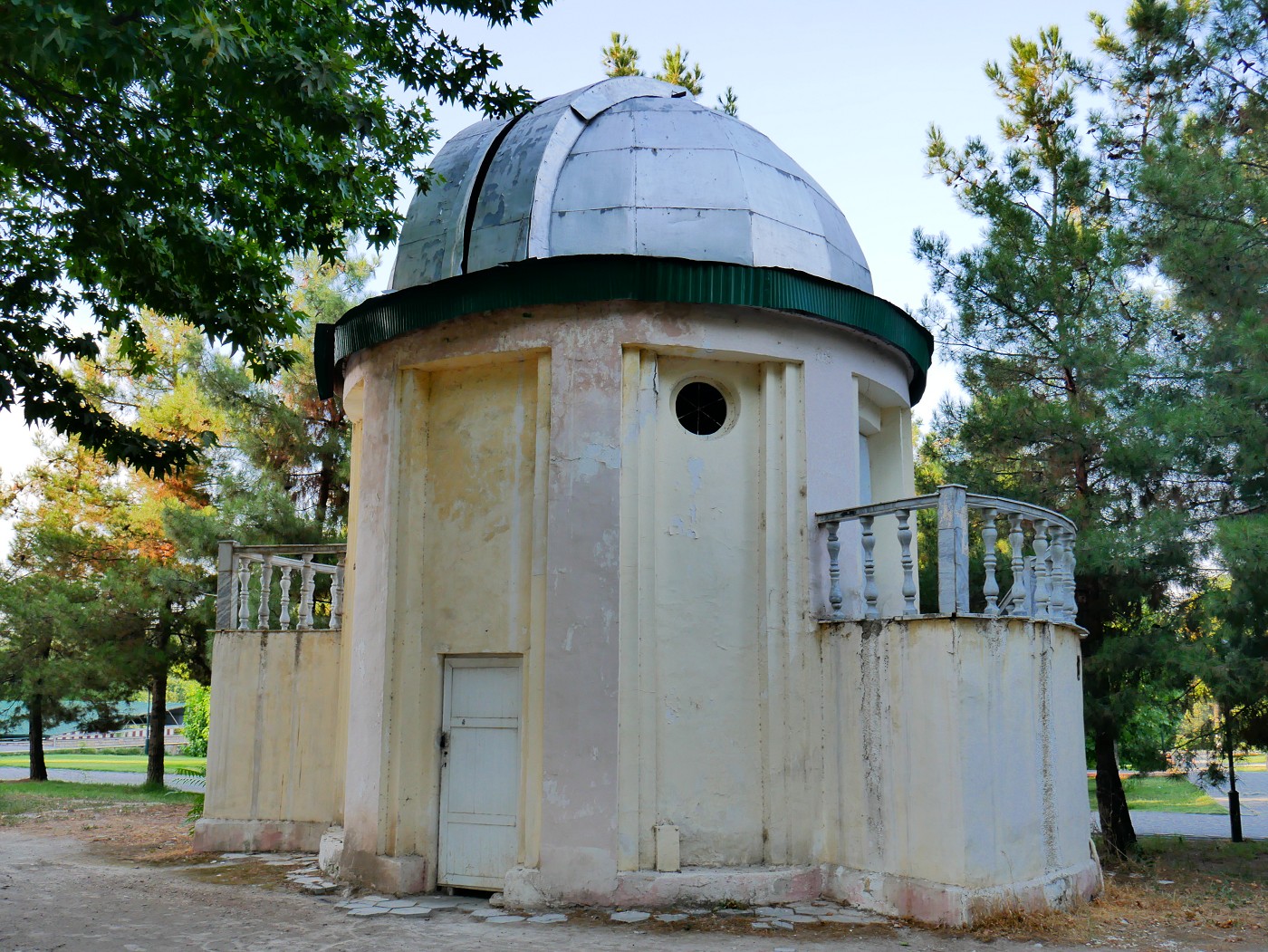
When walking around Samarkand, we encountered a small unmapped observatory in Central Park. Click here to read the dedicated post about this abandoned observatory (it was better than expected).
Amazing post? Consider supporting me by buying me a warm cup of my enemy’s tears
You may also share this post ❤️
